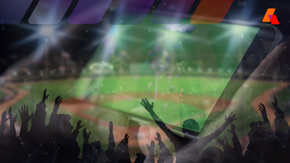How the MLB All-Star Week Attracts Fans and Sponsors on Every Screen

In the summer of 1933, baseball’s brightest stars gathered at Chicago’s Comiskey Park for what was meant to be a one-off game to lift the nation’s spirits during the Great Depression. That first Major League Baseball All-Star Game, with Babe Ruth launching the inaugural All-Star home run, was a simple affair: one night, one diamond, one audience. Nearly 100 years later, the All-Star Game is more than a Midsummer Classic. It’s a multi-day explosion of content, sports, and entertainment that reflects how digital culture celebrates sports and honors its heritage.

Where We Are, and How We Got Here
If Babe Ruth could take a time machine to 2025, he would still recognize the All-Star Game as the exciting showcase of MLB talent that it has always been. But as the media landscape has fractured and the appetite for sports content has become insatiable, MLB has turned the All-Star break into a platform for everything baseball and for everyone who loves it.
Consider this (partial!) lineup of events:
- The MLB Draft, now a marquee event streamed live on MLB.com and ESPN.
- A full-roster reveal that sparks debates and social media campaigns.
- The HBCU Swingman Classic, spotlighting talent from historically Black colleges and universities.
- The All-Star Celebrity Softball Game, which blends pop culture and baseball for viral moments.
- The Home Run Derby, a made-for-TV spectacle that has sometimes rivaled the All-Star Game itself in ratings.
The All-Star Red Carpet Show, where players and their families show off their styles.
Each event creates fresh inventory for broadcasters and sponsors, driving ad revenue and opening the door to new partnerships. The Home Run Derby is a primetime advertising bonanza, with sponsors clamoring for naming rights and in-game activations. The MLB Draft, once held quietly in conference rooms, now draws national TV coverage and sponsorships. Even the Red Carpet Show offers brands a platform to reach fans who might never tune in for nine innings.
How Fans Experience All-Star Week Across Platforms
The real engine behind All-Star Week’s growth is digital culture. MLB has embraced the reality that fans, especially younger ones, are as likely to experience the All-Star Game on their digital screens as they are on their linear televisions. That insight has reshaped how MLB produces, promotes, and monetizes every moment.
Connected TV and Streaming Access
Every major All-Star event is available across both traditional and connected TV platforms. The All-Star Game itself airs live on FOX and Fox Deportes, with a 4K HDR stream available via the FOX Sports app for fans with smart TVs and streaming devices. The Home Run Derby runs on ESPN with simultaneous streaming through the ESPN app. MLB Network covers specialty events like the HBCU Swingman Classic, Futures Game, Celebrity Softball Game, and the Red Carpet Show, all streamed live on MLB.com.
Even the MLB Draft now receives primetime treatment across ESPN and MLB Network, with online streaming options for fans who prefer digital platforms. This multi-platform approach ensures that every event is accessible on fans’ terms.
Social Media Amplification
MLB’s social media strategy is pervasive and immersive. During marquee events, MLB relies on live posting on X, Instagram Stories, and TikTok clips to capture viral moments, like a celebrity’s bat flip in the softball game or a prospect’s emotional draft call. Fans can participate in live Q&As, polls, and even augmented reality experiences themed around All-Star festivities.
The MLB Creator Class program invites influencers and content creators to produce exclusive, shareable moments from All-Star Week, including access to the All-Star House, essentially a content hub for creators.
This embrace of social media is a modern extension of what players like Babe Ruth instinctively understood nearly a century ago: fans don’t just want to see the game. They want to feel connected to the people playing it. Ruth built his legend not only through home runs but also through his larger-than-life persona and willingness to engage with fans, long before social media existed. You might even consider him a social influencer of his day, with fans traveling far and wide to watch his classic home run swing. Today’s players use digital platforms to build that same sense of accessibility and connection at scale.
Official Website and Mobile App Integration
The MLB All-Star website and MLB app serve as command centers for fans. Live streams, on-demand replays, exclusive interviews, and real-time stats are all in one place. Push notifications alert fans to key moments, while interactive features like All-Star voting and player Q&A submissions keep engagement levels high before, during, and after each event.
The MLB has embraced the reality that fans, especially younger ones, are as likely to experience the All-Star Game on their digital screens as they are on their linear televisions.
The Digital Revenue Engine
MLB’s digital expansion is also a revenue engine fueled by a sponsorship and advertising ecosystem designed for the streaming era.
Sponsorship Integration Across Platforms
All-Star Week is brimming with high-value sponsorships. For example, Mastercard is the presenting sponsor of the All-Star Game, while T-Mobile headlines the Home Run Derby (imagine how Babe Ruth would have taken a shine to this event!) The brands appear across every platform: from branded graphics on live streams to sponsored social media segments and in-app banners.
But it goes deeper than logo placement. T-Mobile sponsors drone camera coverage and interactive Derby features. Mastercard’s branding appears in fan voting tools and digital ticketing experiences. Since being launched in 2022, the All-Star House has featured activations from brands like Apple, Budweiser, Corona, Nike, and Gatorade, which blurs the line between entertainment and advertising.
Advertising Across Streams and Social Feeds
Streaming has expanded the ad inventory available around All-Star Week, blending traditional linear broadcasts with digital streams in ways that reflect the convergence model embraced by many media companies today. The All-Star Game airs on FOX, with simultaneous digital distribution through the FOX Sports app, while other events like the Home Run Derby stream alongside their ESPN broadcasts. MLB Network adds further reach with coverage of specialty events.
This hybrid distribution model reflects the rise of linear streaming, where buyers plan campaigns holistically across both linear and digital channels, targeting fans wherever they choose to watch. On MLB.com and the MLB app, advertisers engage viewers with display ads, sponsored video segments, and interactive formats, all with the benefit of precise targeting and real-time performance measurement.
The result is a unified, multi-platform advertising environment designed to meet both brand reach and audience relevance goals.
MLB’s social media channels generate revenue through sponsored posts, branded hashtags, and influencer partnerships. Sweepstakes and contests run in collaboration with sponsors help drive both engagement and data collection. For example, Mastercard’s “Home Team Advantage Small Business Contest” offers small businesses a chance at in-stadium marketing and VIP All-Star experiences, promoted across MLB’s digital channels.
Meeting Fans Where They Are
MLB’s approach to All-Star Week is a blueprint for how sports can thrive in the streaming era. But while the platforms and formats have changed, one thing remains constant: MLB meets fans where they are. During the Great Depression, that meant making the Midsummer Classic accessible through radio broadcasts. Today, it means delivering live action on connected TVs, bite-sized highlights on social media, and interactive experiences on mobile apps. MLB understands that celebrating baseball is about making sure every fan, on every screen, feels part of the game—and more connected to the great stars whose rise to fame and glory is as American as apple pie.